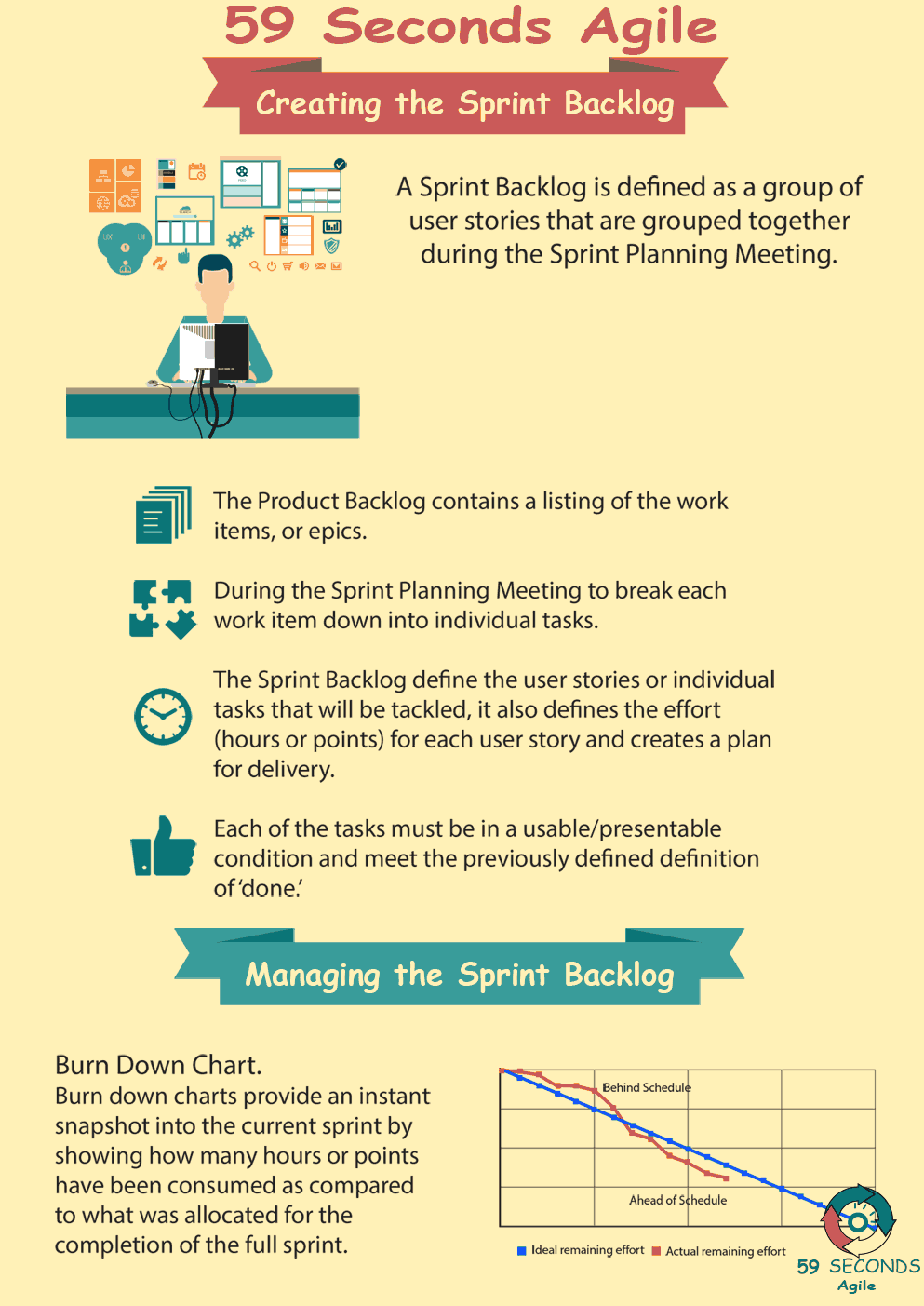Agile Sprint Backlog
A 59 Seconds Agile Training Video
Continue to Part 4 Below
The Agile Sprint Backlog
A 59 Seconds Agile Article
This article provides an ‘Introduction in to ‘The Agile Sprint Backlog’ and looks to discuss the metrics used for measuring project progress.
Creating a Sprint Backlog
In scrum projects, the sprint backlog is the collection of work that a team expects to finish within a sprint. Where the product backlog contains all stories planned for an entire product, the sprint backlog is smaller, and only contains stories that the development team has committed to finishing within the sprint.
The sprint backlog is formed from items originally in the product backlog. Collecting a small set of items gives the Scrum team something to focus on during a single sprint, and drives development on the product for the duration of that sprint. Because items in the sprint backlog are committed to being finished within the sprint, it is important that the Scrum team create a sprint backlog that is manageable.
Teams follow a thin line between too many stories and story points, and too few. The sprint backlog should contain enough work to keep the Scrum team busy for the entire sprint. Simultaneously, the sprint backlog should not contain so much work that the Scrum team cannot finish in time.
Any items that are committed to the sprint backlog should expect to be finished by the end of the sprint. Stories that are not finished at the end of a sprint return to the product backlog and must be reprioritized.
Continue Reading —> Next
The Agile Sprint Backlog
A 59 Seconds Agile Video Animation
Continue Reading —> Next
User Stories Applied
A 59 Seconds Agile Book Review
User Stories Applied by Mike Cohn is one of our favourite books on Agile User Stories. The book starts with an overview into user stories, and details what a user story is and the different aspects of them. He then discusses how to go about writing a user story, and provides details of the INVEST criteria that can be used to determine if the story is meeting all of its objectives. Next Mike gives an in depth discussion of who user stories are written for and where to begin when gathering the details for them. The book then discusses acceptance testing user stories, including how to go about specifying these criteria and the responsibilities of the development team and customers during this process.
Continue Reading —> Next
Creating the Sprint Backlog
A 59 Seconds Agile Infographic

Continue Reading —> Next
Agile Scrum Master Training Course
Continue Reading —> Next
Our Favourite Agile Books
We found these books great for finding out more information on Agile Scrum:
Continue Reading —> Next


